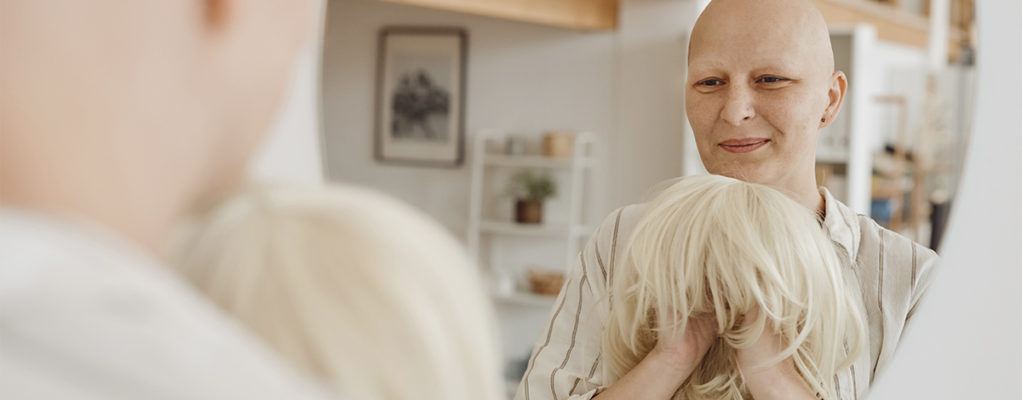Mesothelioma patients who receive chemotherapy treatment often experience hair loss. This hair loss can begin as early as 2 to 3 weeks after the first round of chemotherapy. Many patients shave their heads prior to starting chemotherapy. Wigs can be a way for mesothelioma patients to maintain a sense of normalcy and consistency during a difficult journey.
Hair Loss Caused by Cancer Treatment
Mesothelioma patients are often treated with chemotherapy to destroy cancer cells. Although chemotherapy targets cancer cells, it also targets rapidly growing cells in the hair roots. While chemotherapy can improve quality of life and reduce pain for mesothelioma patients, it can also cause hair loss.
Radiation therapy can also cause hair loss. Radiation causes hair loss only in the specific region of the body where the therapy is applied, while chemotherapy causes hair loss all throughout the body.
Mesothelioma patients receiving chemotherapy or radiation therapy may notice hair loss in the following areas:
- Armpits
- Body hair
- Eyebrows
- Eyelashes
- Pubic hair
- Scalp
Chemotherapy may begin causing hair loss around 2-3 weeks after the first round of treatment. Your scalp may feel particularly tender in the beginning of treatment. Many people buzz their head before they start treatment to prevent hair from falling out everywhere.
Hair loss can be quite distressing for those who are starting chemotherapy or radiation therapy. Often, people who are beginning chemotherapy treatments consider wearing a wig for privacy and a sense of normalcy during aggressive cancer treatment.
Why Should I Consider Wearing a Wig?
Mesothelioma patients undergoing chemotherapy are experiencing a difficult journey that can be hard to share with the world. Sadly, hair loss is one of the universal signs of cancer treatment and isn’t always easy to hide. This can lead to invasive and unwanted questions from others. Wigs help provide those undergoing chemotherapy with the privacy to only share details with those they’re comfortable sharing with.
Wigs can also help provide mesothelioma patients with a sense of self-expression. Patients can try out different hairstyles to have an outlet of creativity. This can be particularly empowering for those who have long been used to styling their hair a certain way before beginning chemotherapy sessions.
Patients can prepare to purchase a wig by taking photos of their preferred hair style and then working with a stylist, friend, or family member to find a wig that is right for them.
Where Can I Buy a Wig?
There are plenty of options for those looking to purchase a wig. If you or a family member are undergoing cancer treatments and dealing with hair loss, consider shopping at a local wig shop or an online store.
Patients should contact their health insurance agency to see if their plan covers wigs or if it is tax-deductible. Medicare Parts A and B do not cover the cost of wigs for people going through cancer treatment, but they may be a tax-deductible expense.
If you cannot afford a wig, contact a social worker at your local cancer center. There may be foundations that provide funding to help you buy a wig.
Look Good Feel Better is a free program sponsored by the Look Good Feel Better Foundation and the Professional Beauty Association that teaches women undergoing cancer treatment beauty techniques. They have many free workshops to help women style their new wigs.
There are also several alternatives for those who do not want to wear a wig. Hats, headbands, headscarves, and turbans are other ways cancer patients can express themselves.
Wigs and their alternatives can provide a great boost to a patient’s self-esteem when they need it most.
If you or a loved one is going through chemotherapy or radiation treatment, make sure to ask the medical staff if they have resources on wigs. Often, you will be able to find great resources on wig availability from staff members, nurses, and physicians who care about their patients’ emotional well-being.










